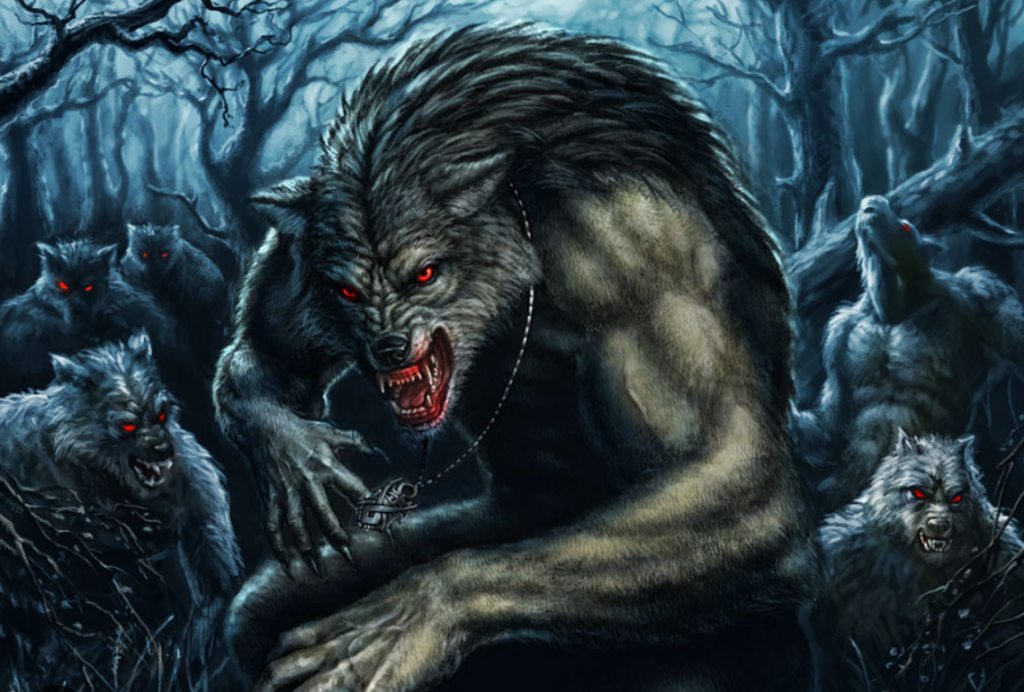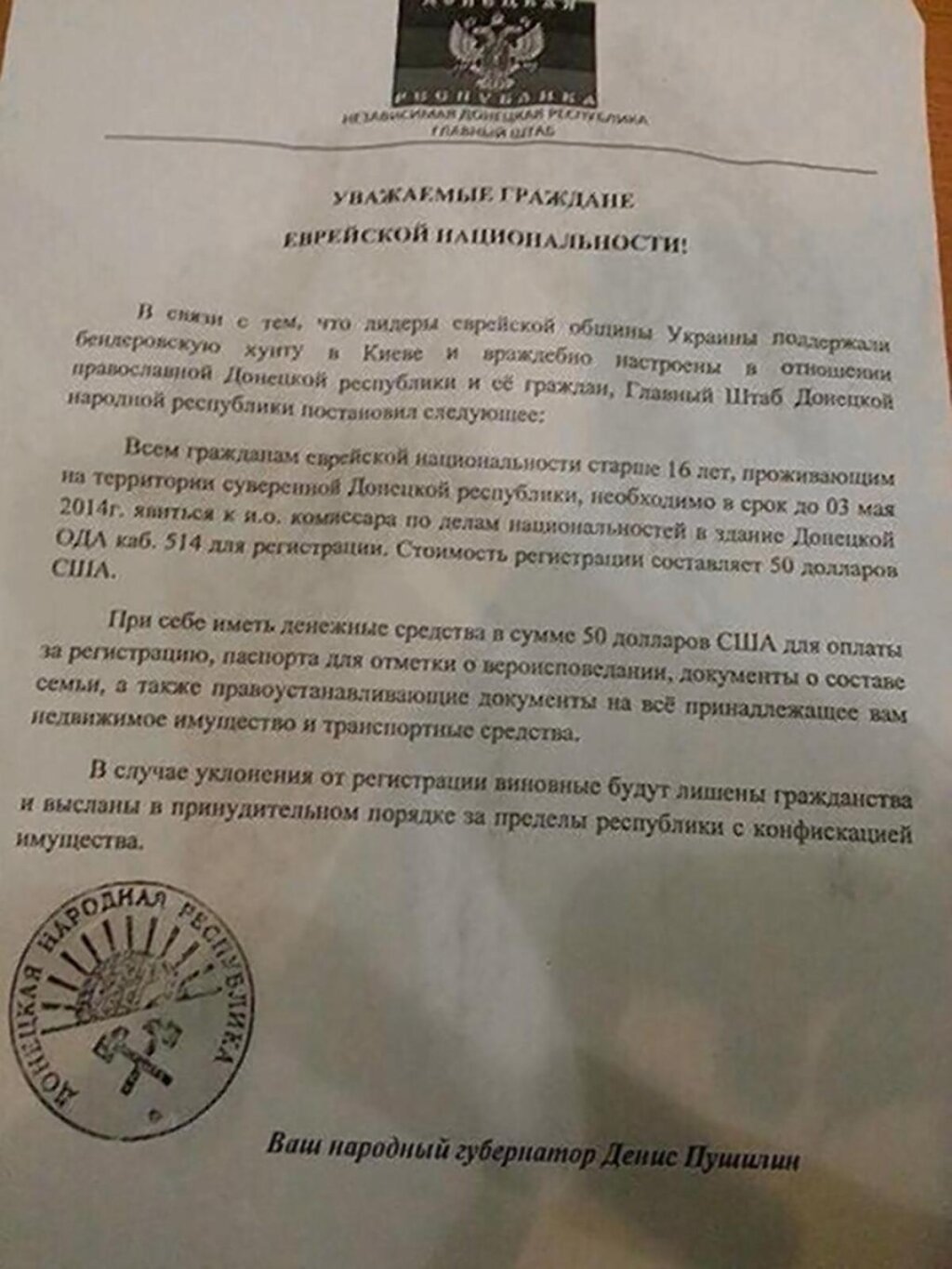The Jordan Center stands with all the people of Ukraine, Russia, and the rest of the world who oppose the Russian invasion of Ukraine. See our statement here.
Alexander Herbert is a PhD candidate at Brandeis University focusing on the scientific, technological, and environmental history of the late Soviet Union. His forthcoming book, Fear Before the Fall: Horror Films in the Late Soviet Union, will publish in February.
Werewolves were everywhere after the collapse of the Soviet Union. A powerful metaphor for transformation, they appeared frequently in Russian literature and film, foreshadowing impending—and not necessarily voluntary—transitions for millions of Russians.
The early 1990s in Russia are remembered as the hardest socioeconomic time in living memory, even a second “Time of Troubles.” Food and other consumer goods like cigarettes and flour were in short supply. Parents worried for their children. The state and its accompanying services, institutions, and politicians were unstable and unpredictable. On top of the already traumatic AIDS pandemic, it was reported that hard drug use became a common avenue for young adults looking to escape the struggles of everyday life.
Millions of people woke up one morning with passports from a country that no longer existed. This new Time of Troubles bred an atmosphere of scarcity, forcing Russians into survival mode, causing them to rely on impulse and opportunity rather than state planning and paternalism.
Following films like Liumi (1991) and Time of Darkness [Feofaniya, risuyushchaya smert'] (1991), postmodern writer Victor Pelevin used the metaphor of lycanthropy—werewolfism—to describe the Russian post-Soviet experience. Pelevin’s “A Werewolf Problem in Central Russia” (1991) uses this metaphor to describe a place beyond the strict binaries of (post-)socialism. Even as Russia was officially transitioning from a planned to a “market” economy, neither the path to the destination, nor the destination itself, were especially well-defined.
There are a number of interpretations for werewolf symbolism, which vary across Eastern Europe. For one contemporary critic, werewolves connote raw emotion, impulse, and the wild—the opposite of vampires, their supernatural co-conspirators. According to the Italian historian Carlo Ginzburg, werewolves emerged across various cultures of the continent from a common experience with ancient shamanism. The ecstasy experienced by a shaman—perhaps one with limited contact with the Roman world, living in Siberia or present-day Eastern Europe—was often figured through the imagery and symbology of wild animals. These archaic recollections morphed over time into folktales of humans transforming in the night in order either to work with the devil or fight against him.
In Russia, werewolf stories are more directly concerned with the transformation process itself. In Vologda province, a sorceress is said to have turned into a wolf by “throwing herself” over a rocking chair. In Smolensk, peasants recalled how the children of a sorcerer became wolves after drinking an elixir. In other regions, the tale focuses on a witch mother-in-law who turns her stepchild into a werewolf. These narratives focus on transformation as a form of punishment.
In the Soviet context, there are two related understandings derived from the mixing of Russian and Livonian lycanthropy: Russian folklore centers less on where the werewolf’s loyalty lies (the devil or the divine), or what the being-in-itself represents, and more on the transformative process and its consequences. To be turned into a werewolf in Russian folk tradition is a lesson learned, and the tale ends there. However, the Livonian beast represents a scapegoat for times of unusual trouble; the actions of the werewolf are what matters most, not the transformation or its function as punishment. We can therefore say that the USSR inherited two understandings of an already dualistic figure: one that privileges the man-beast hybrid, and the other that is more interested in conditions and actions.
This multi-faceted approach to the werewolf in Soviet culture is reflected in cultural artifacts produced in the final days of the USSR, including Pelevin's “A Werewolf Problem in Central Russia.” The story's protagonist, Sasha, encounters a pack of werewolves who transform him into one of their own and lead him to fight an older wolf. The narrator spends a lot of time detailing the sensations Sasha experiences—like heightened senses and or a fast-paced reality—that are distinct from those a human might feel. To further emphasize the transformative aspects, Pelvin describes the human shapes rendered by wolves’ shadows in the moonlight. Much like the Livonian lycanthrope, Pelevin's werewolves are heroic Übermenschen who rely on instinct rather than rational thought or pre-established plans.
Sasha, the new werewolf, emblematizes the two choices available to Russians in late perestroika: reform or collapse, socialism or capitalism. That Pelevin presents his transformation into a bloodthirsty beast as a positive development suggests that only accepting inevitable change can produce improvement. This assumption did not outlast the 1990s; already in The Sacred Book of the Werewolf (2004), Pelevin’s post-socialist lycanthrope is more demonic and deceitful than heroic.
Like the Russian folktales that at least partly inspired it, Pelevin’s 1991 story also contains an underlying moral element that points to the circularity of transformations. Early in the tale, Sasha is confronted with a forked road and takes what he perceives to be the right path. However, after walking for a while, he realizes he’s completed a giant circle and goes the other way in hopes of attaining his destination. By the story's end, we learn that, from the beginning, he was manipulated into encountering the werewolf pack. As is frequent in Pelevin's stories, freedom is an illusion and individualism is barely distinguishable from joining a crowd, swarm or pack, a "choice" that only apparently corresponds to the path not taken.
In contrast to the blind conformity he had experienced on the collective farm where he grew up, Sasha finds that when the "entire pack" howls together, he can "understand the feelings expressed in every voice and the meaning of the whole business. Every voice howled its own theme.” Sasha transformation thus heightens his perception of difference even when he is part of a group. The werewolves' supernatural ability to express how they feel individually even as they engage in a collective activity becomes the new basis on which Sasha comes to understand his own condition.
Werewolves adhere only loosely to the binaries of human/ inhuman, night/ day, instead tending to transgress or reverse them: as a creature, the werewolf is both human and animal, using the human time of rest (nighttime) as its most active period. Pelevin’s 1991 story exploits the fluidity or in-between-ness of werewolf identity, demonstrating the limits of a bipolar perception of reality. As a liminal figure, the werewolf becomes an apt metaphor for the post-Soviet transition from "communism" to "capitalism," in which clear dichotomies gave way to hybrid forms of lived reality.



